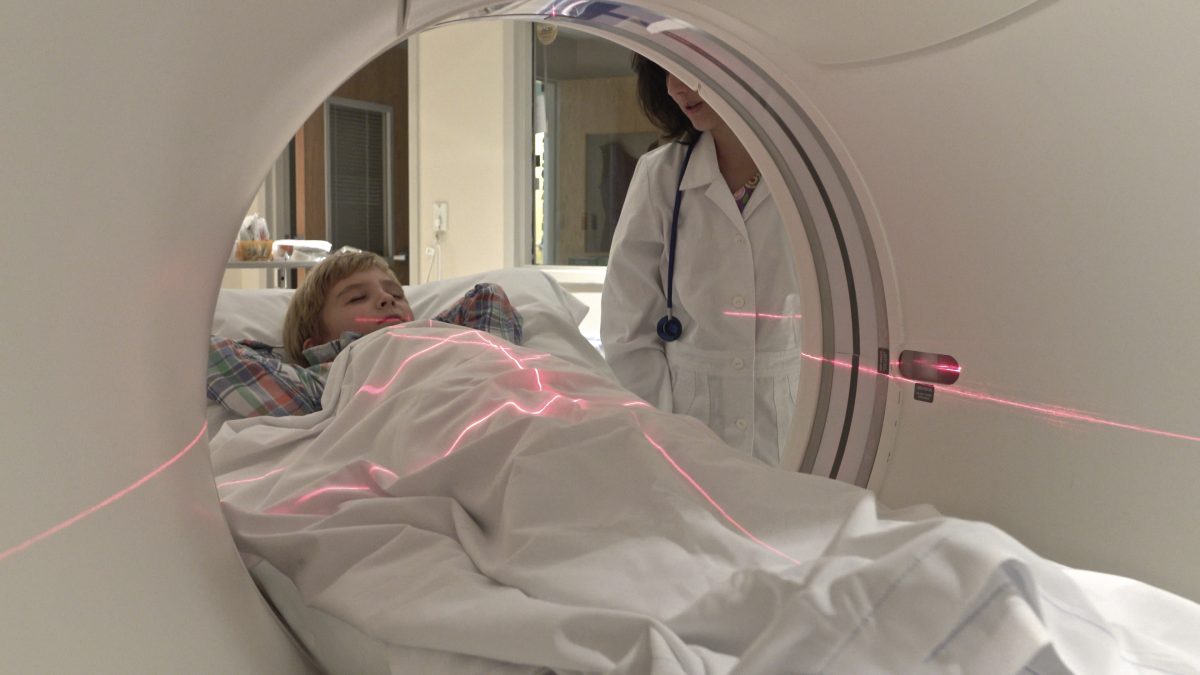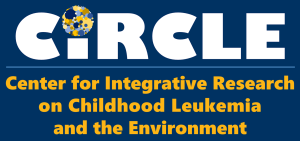

CIRCLE director, Dr. Catherine Metayer, and her colleague, Dr. Karen Barltey, demonstrated postnatal diagnostic X-rays are associated with acute lymphoblastic leukemia using the California Childhood Leukemia Study population.
What is Ionizing Radiation?
Two common sources of exposure to ionizing radiation are x-rays and computed tomography (CT) scans. Since the discovery of x-rays in the late 19th century, we have experienced remarkable health benefits and seen incredible progress in the development of this medical technology. The CT is considered one of the most important inventions in medical history and has improved and saved many lives. However, ionizing radiation such as those from x-rays and CT scans is also a known cause of cancer, depending on the dose, the targeted body part, and safety precautions followed.


Ionizing radiation is associated with childhood leukemia.
Ionizing Radiation and Childhood Leukemia
Studies from the 1950s showed that ionizing radiation significantly increased the risk of leukemia in children whose mothers received x-rays during their pregnancy. Today, mothers no longer receive x-rays during pregnancy, unless the benefit greatly outweighs the risks. When pregnant mothers do receive x-rays, medical staff use protective equipment to limit the radiation the mother and her child. In their recent analysis of the risks of exposure to ionizing radiation after birth, Dr. Bartley and Dr. Metayer included children aged 0-14 years diagnosed with acute lymphoblastic leukemia (N=711) or acute myeloid leukemia (N=116) from 1995 to 2008. Controls (N=1107) were randomly selected from the California birth registry and individually matched to cases with respect to date of birth, sex, Hispanic ethnicity and maternal race. The investigators assessed whether childhood leukemia was associated with child’s X-rays after birth, using interviews with the children’s mothers to assess X-ray exposure. The investigators considered the number of X-rays, region of the body X-rayed, and age at first X-ray, as well as the number of maternal X-rays before and during pregnancy (preconception and prenatal). The risk of acute lymphoblastic leukemia was elevated in children exposed to three or more postnatal X-rays. Region of the body exposed was not a strong predictor of leukemia risk. No associations were observed between number of postnatal X-rays and acute myeloid leukemia. These results require careful interpretation because the information provided by the patents was not confirmed against medical records. The full article is available here.
In order to be more precise in our assessment, we are currently expanding this research project to include medical records and CT scan histories. We will also study the effect of medical imaging on childhood leukemia risk with colleagues from the Childhood Leukemia International Consortium. We hope our future research projects will clarify the role of radiation exposure in the development of leukemia in our children. Until more information is available, it is prudent to weigh the risks and benefits of medical x-rays and CT-scans to children.


